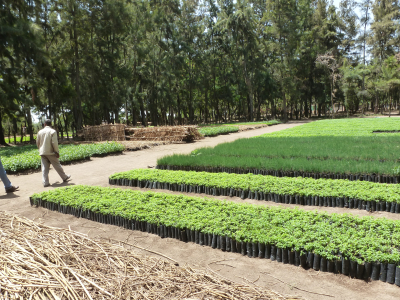This project will build upon the vast experience gained over the years on the geospatial science, technology and applications for agroecosystem research and outreach. Recently, the in central Asia (Biradar et al., 2016; http://geoagro.icarda.org/ca/), ongoing efforts in eastern Gangetic plains (beta; http://geoagro.icarda.org/intensification/), mobile phone apps http://geoagro.icarda.org/app/ and tools http://geoagro.icarda.org/en/outreach/details/Tools and ICARDA has built a state of the art Geoinformatics facility with advanced computational powerhouse and cloud computing (AWS, Azure). Over the last few years, the center has developed several machine learning algorithms and automation tools for Big-Data analytics and satellite data processing for agricultural application such as crop type mapping, water use efficiency, water productivity, rainwater harvesting, yield gap analysis, and spatial decision support systems at multiple scales. The expert system analytics for state specific needs will consulted for identifying priority informational and transformational needs of smallholders related to the optimization of farm productivity, cropping systems, water productivity, crop diversity and sustainable intensification. The rapid landscape to farm typological appraisals will be built to understand inter and intra seasonal dynamics. The high-resolution satellite image constellations along with drone data, in-situ information and weather networks will use for building the agricultural and ecosystems typologies. The machine learn algorithms and big-dada analytical tools and approaches will be used for deriving agricultural granularity, crop yield, yield potential, crop water productivity at multi-temporal scales. The hotspots analysis will carried to map the crop specific indemnification zones with focus on crop diversity, food legumes and ecological intensification.
For all program implementation, ICARDA always adopts the strategy of collaboration with NARS (National Agricultural Research Systems), State Agricultural and technological institutions, and relevant partners for both research and out-scaling. The pilot project will be developed and implemented initially (Phase 1) in five districts of the state such as; Sehore, Bhopal, Vidisha, Raisen and Sagar (see figure 2). The project will also utilise outcomes of the ongoing food legume intensification missions in the state of Madhya Pradesh. The project envisages to work with multiple partners to achieve successful operation and integration to build most interoperable decision support systems for inclusive and sustainable intensification. The location (or zone) specific adaptation and package of interventions will be developed, tested and prioritized. The project would focus on farm to landscape level replication of cluster of interventions based on the very high spatial decision analytics. The project will be designed to deliver tailor-made open access precision information analytical platform for decision makers to farmers in partnership with local, state, and regional networks.






